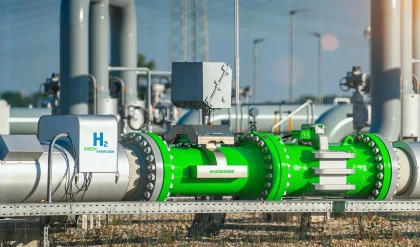
Decarbonizing Australia’s economy while protecting the nation’s vital natural resources is feasible, but it will necessitate extensive collaboration among energy developers, local and state governments, landowners, and various interest groups. This conclusion stems from recent research conducted by Princeton University and The University of Queensland, published in Nature Sustainability on May 29.
The study asserts that Australia could achieve complete decarbonization of its energy and domestic economies by 2060 without jeopardizing critical biodiversity areas, agricultural activities, or Indigenous land rights. Andrew Pascale, the lead author and research scholar at Princeton’s Andlinger Center for Energy and the Environment, emphasized that the land required for this energy transition is substantial, and the speed of renewable infrastructure deployment is unprecedented. He highlighted that the transition could be successfully accomplished by integrating diverse stakeholder perspectives.
The research indicates that if stakeholders collaborate to locate the most appropriate areas for renewable energy development, it is possible to identify over 110,000 square kilometers—equivalent to 1.7 times the size of Tasmania—for renewable infrastructure by 2060. This approach would help achieve net-zero emissions while maintaining biodiversity and agricultural land. Conversely, if stakeholders remain entrenched in their views, energy prices could rise sharply, potentially leading to a clean energy shortfall of nearly 500 gigawatts, which would disrupt the envisioned decarbonization trajectory and shift focus to costlier alternatives.
Co-author Chris Greig remarked on the legitimate tensions surrounding renewable energy development, stressing the need to balance values such as protecting biodiversity, honoring Indigenous rights, and supporting agricultural interests alongside climate objectives. This study builds on previous collaborative efforts in the Net Zero Australia project, which identified pathways for full decarbonization while consulting stakeholder groups like the National Farmers Federation and the Australian Conservation Foundation.
In their analysis, the researchers incorporated various stakeholder values concerning land use into their techno-economic model to pinpoint areas suitable for renewable energy development and those that should be safeguarded. James Watson, a co-author and environmental management professor at The University of Queensland, noted that integrating biodiversity and natural capital considerations into energy planning represents a crucial step forward.
The study proposes a ‘traffic-light’ system for renewable infrastructure siting, classifying areas into three categories: green for easily sited projects, orange for areas needing further stakeholder engagement, and red for restricted zones. The researchers highlighted a concerning overlap between existing renewable energy zones and biodiversity exclusion areas, suggesting a need for revision in planning strategies.
Pascale remarked on the distinction between modeling a net-zero pathway and actual planning, emphasizing that resource quality and proximity to existing infrastructure may not suffice without regard to biodiversity and national commitments. Greig added that effective net-zero pathways must be adaptable and account for uncertainties related to land use.
The research team called for the establishment of a planning and approval process that harmonizes the varied interests of energy development, Indigenous land rights, and environmental concerns. They suggested focusing on converting potential development sites into those that accommodate diverse stakeholder interests swiftly.
Amid numerous uncertainties, including a lack of critical habitat data and species responses to climate change, the researchers asserted that using the best available data should not hinder progress in renewable energy development. Watson stressed the urgency of protecting endangered species and their habitats, advocating for immediate action while recognizing the need for better data. He concluded by stating that the need for a clean energy future demands proactive planning that does not compromise other societal goals.
Reference:
- Andrew C. Pascale, James E. M. Watson, Dominic Davis, Simon Smart, Michael Brear, Ryan Jones, Chris Greig. Negotiating risks to natural capital in net-zero transitions. Nature Sustainability, 2025; DOI: 10.1038/s41893-025-01576-y






